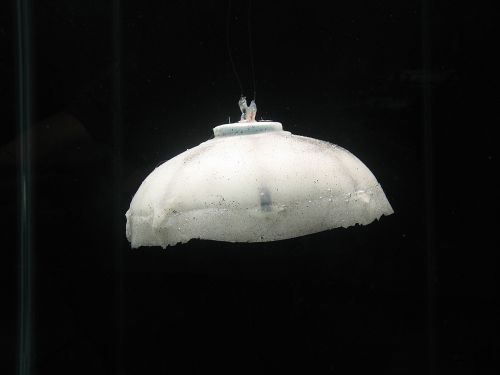 |
This undated photo released by the BMDL and CEHMS labs at Virginia Tech in Blacksburg, Virginia, show the robotic jellyfish "Robojelly." (AFP) |
The robot’s body is made of eight segments made of shape-metal alloy -- metals that remember their original shape after being scrunched up.
They are coated with a platinum black powder, which reacts with the oxygen and hydrogen components of sea water to create heat.
The heat travels to the robot’s artificial muscles, causing the eight bell segments to contract and thus eject the water. After contraction, the segments relax and regain their original shape.
“To our knowledge this is the first successful powering of an underwater robot using external hydrogen as a fuel source,” said Yonas Tadesse, an Ethiopian-born mechanical engineer at Virginia Tech.
Still in the lab phase, Robojelly goes in only one direction because all eight segments are activated at the same time.
The next step will be to power each segment, enabling the robot to move and be controlled in different directions.
The study appears in the journal Smart Materials and Structures, published by Britain’s Institute of Physics. (AFP)







![[Today’s K-pop] Blackpink’s Jennie, Lisa invited to Coachella as solo acts](http://res.heraldm.com/phpwas/restmb_idxmake.php?idx=644&simg=/content/image/2024/11/21/20241121050099_0.jpg)